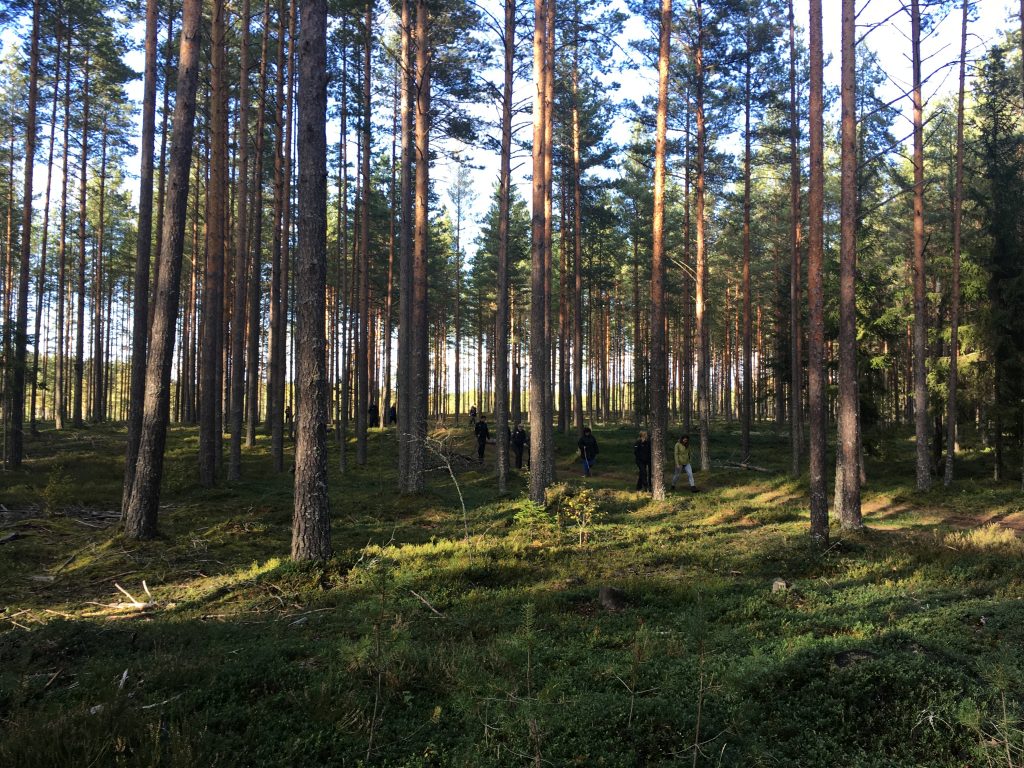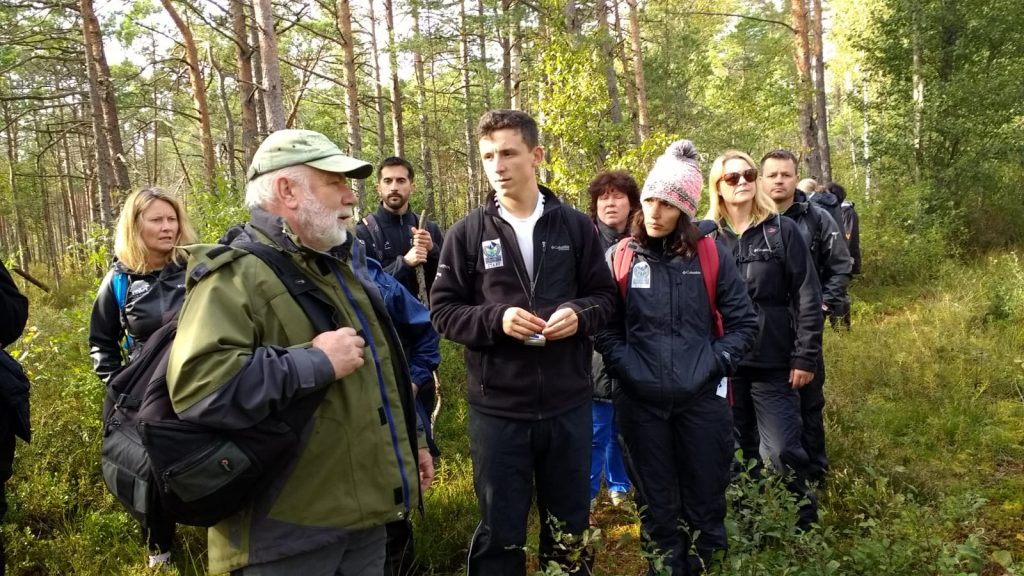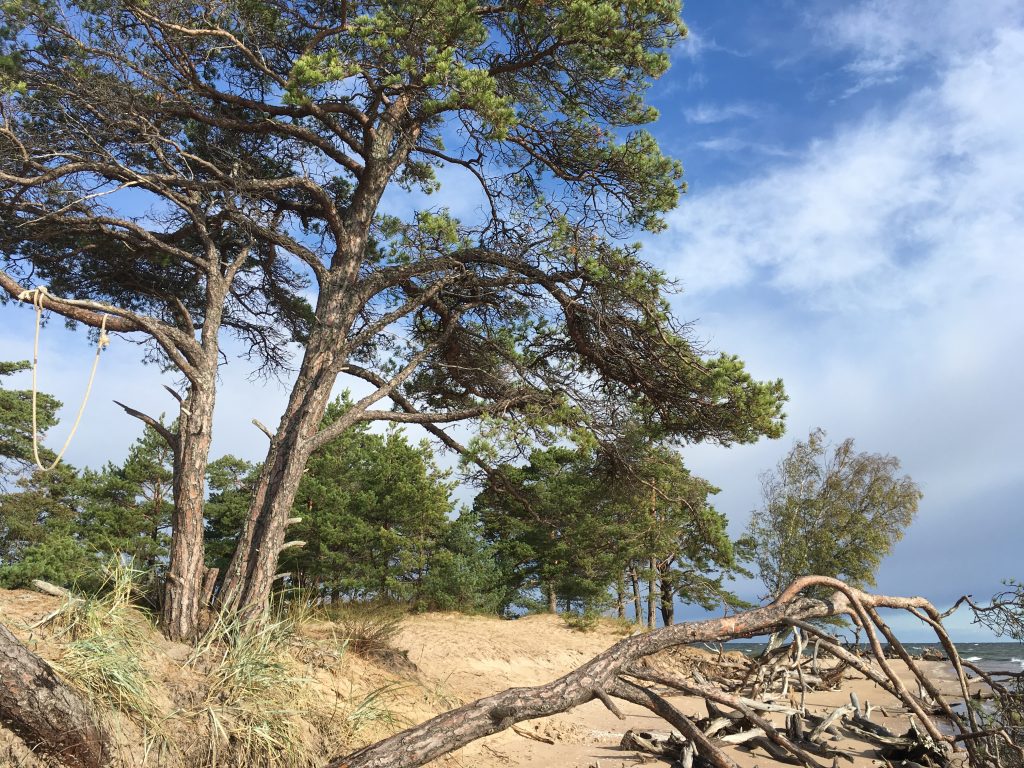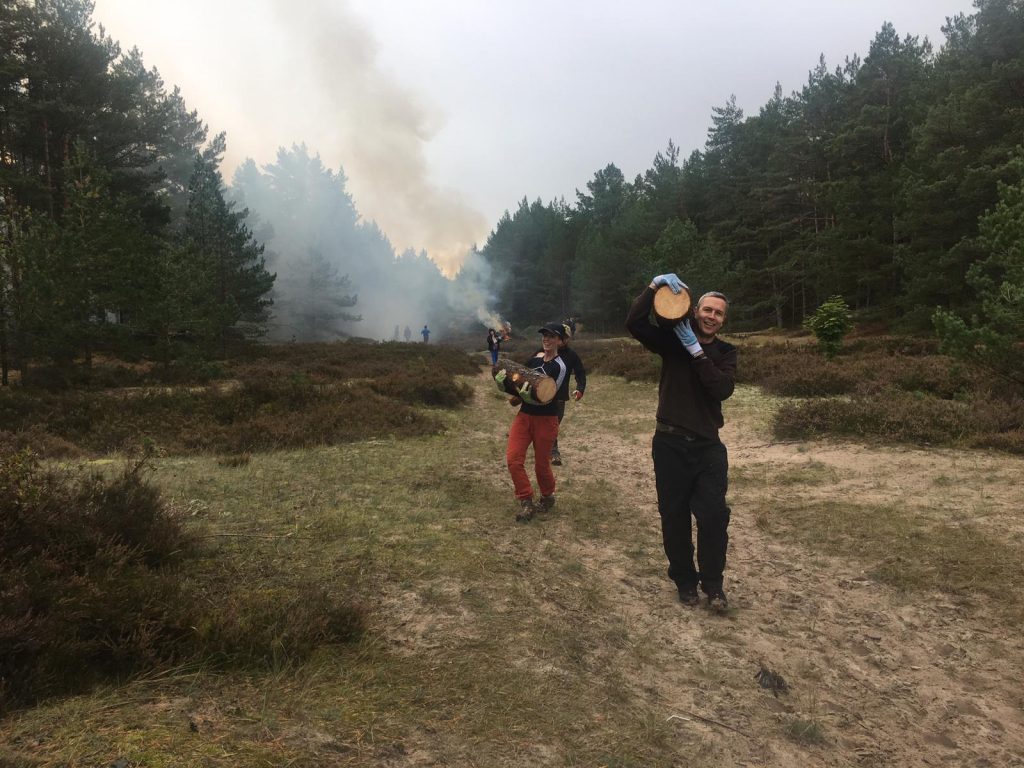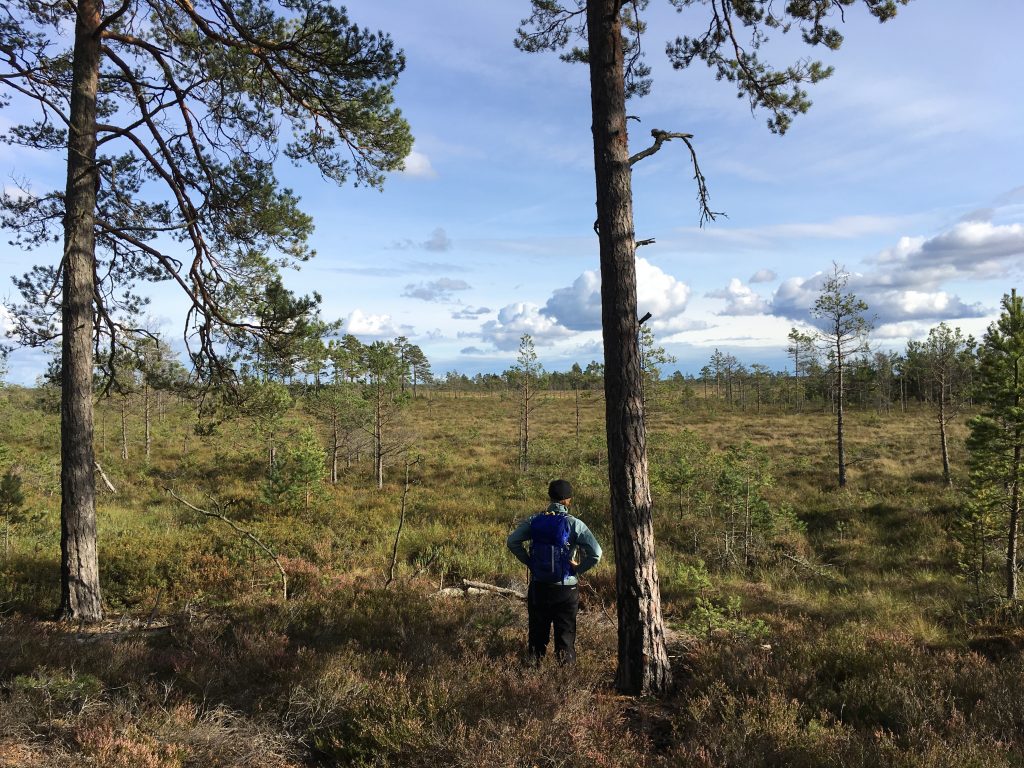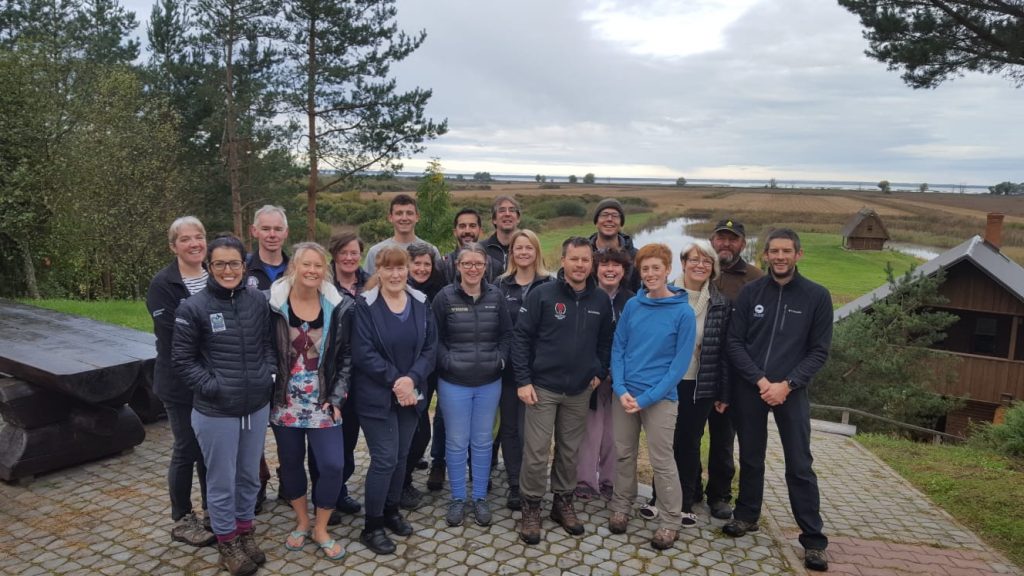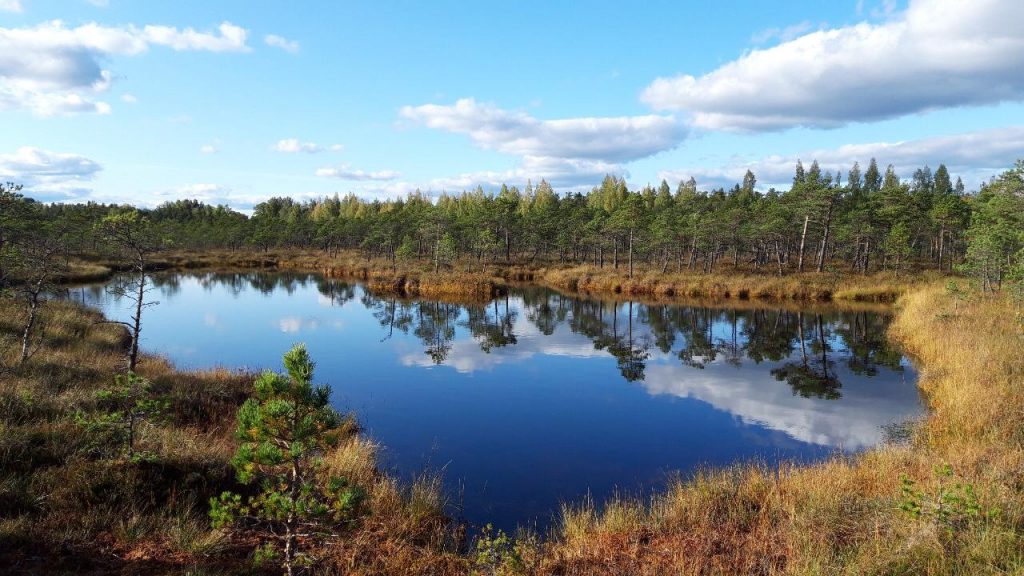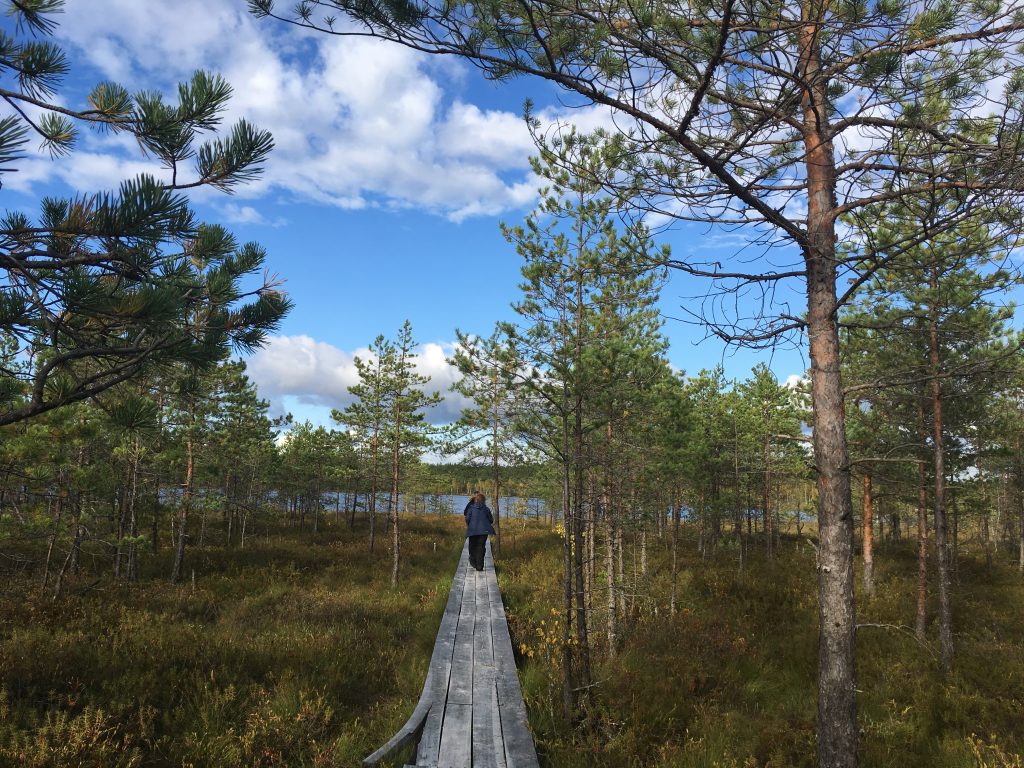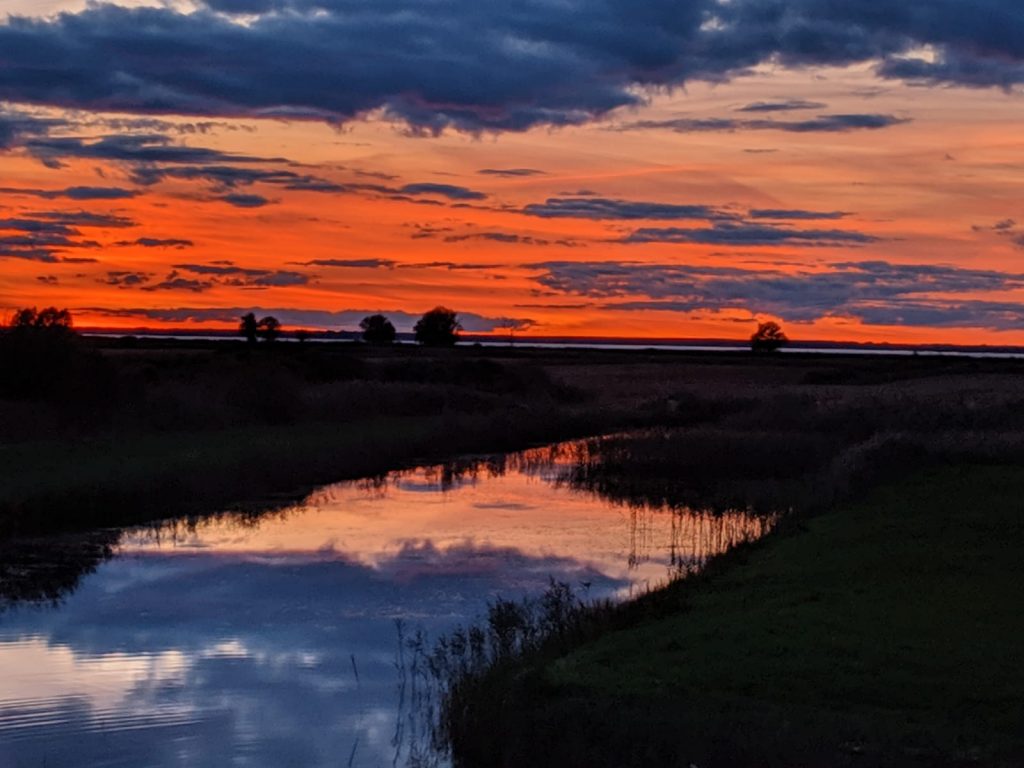There’s Space for Everyone
11th October 2019

Last Month Heather Palomino, Cairngorms National Park Volunteer Ranger attended the EUROPARC Conference 2019 in Latvia to learn more about the natural landscapes, wildlife and communities across this stunning country.
Sitting in the auditorium at the 2018 EUROPARC Conference hosted in Aviemore, I had marvelled at the video on the big screen as Latvia was announced as host of the 2019 event. I certainly did not imagine that one year later I would find myself there in person, at the end of a week’s study tour of forests, bogs and wetlands within Latvia’s specially protected areas.
This year’s conference was entitled ‘Nature on your Mind: Understanding our Values’ and particular emphasis was placed on the role of nature in human health; we were encouraged to return home with very personal ‘green prescriptions’ to follow in our own protected areas across Europe and beyond.
There are so many interesting facts about Latvia, be it natural history, human history or culture, I’m not sure where to begin. So here’s how our EUROPARC hosts welcomed their delegates to the conference:
‘Welcome to Latvia! Over 1 million folk songs, the widest waterfall in Europe, over 500 km of seacoast and tons of sandy beaches, half of state area covered by forest, amber, over 800 Art Nouveau buildings, rich nature, long desire for freedom – these are just some of the reasons to explore Latvia. There’s space for everyone …’
Latvia’s protected areas number more than 600 and cover around 13 per cent of its territory. The different categories are: strict nature reserve (strictly controlled access, limited number of visitors, under supervision), national park, protected landscape area, nature park, nature reserve, marine protected area, biosphere reserve, microreserve, and nature monuments. More than half of these areas have EU protected area status under Natura 2000.
That should set the scene.
As a Volunteer Ranger with Cairngorms National Park Authority, I have been delighted to meet so many like-minded individuals across the Park. The learning curve has been very steep … and I suspect it will continue to be so. Nature is infinitely fascinating – the more I learn, the more questions I have. My nine days travelling in Latvia raised so many interesting facts and issues, I feel I could spend another nine days just processing them all (currently making mental note – must remember I’m supposed to start work tomorrow!). I travelled with sixteen individuals from National Parks across Scotland, England and Wales – friendly, interesting, knowledgeable, fun people who were keen to share with a ‘Park novice’ like myself!
I said I would attempt a sort of blog about my trip. Sometimes I get a bit ‘wordy’, so I thought that as I was asked to think about how I felt on the trip, I’d try recounting the trip in snippets about emotions felt and things that struck me as memorable. I Googled emotions and selected some of Plutchik’s and Aristotle’s suggested basics, so here goes:
Fear/Anxiety
- Fleeting moments of anxiety when our ‘inspector’ guide admitted he was a bit ‘lost in deep forest’ (our Brecon ranger knew how to get us out, he later told us). Lesson learnt: GPS is not infallible, especially in deep forest; Plan B is always a good idea; know your route in and out.
- High towers: vertigo vanquished, towers were climbed and the views across vast bogs were worth every shaky step.

Anger
- At the thought of wolves being ‘lured’ out of the strict nature reserve to be shot by hunters just outside the boundary.
Joy
- The sights, sounds and smells of the wild places.
- As we trudged through the forest and reached a clearing, everyone stopped to hear and see at least 30 cranes flying high above us in the blue sky.
- At the sharing of a lifetime’s accumulation of knowledge, from our Latvian hosts and guides, and within our group (my ears were flapping the whole time).
- Star gazing in dark skies.
Disgust
- The look on the faces of the brave (or crazy?) members of our group who tried tasting beaver tincture, a home brew with antiseptic properties. I will not list the ingredients here …
- Deer keds: annoying flies that shed their wings on landing, before getting caught up in the host’s hair.
Surprise
- At how good the blackened smoked fish tasted, prepared traditionally at a nearby Livonian village.
- At the amount of Caledonian/Scots Pine and Silver Birch (my two favourites), Blaeberry and Crowberry – it reminded me of home!
Trust
- In our team leader, the local ‘inspectors’/guides and my fellow SNPS travellers.
- At EUROPARC, that staff across Europe care deeply about our protected areas and that the exchange will continue with or without Brexit.
Anticipation
- Our practical tasks – would I be up to the challenge? How would I feel about witnessing the deconstruction of a beaver dam? (Explanation was given about the balancing of interests and the species involved: in one particular instance there was concern about the loss of valuable meadow and rare plant species – we were told that semi-natural grassland in Latvia covers less than 1% of its territory, whereas beaver populations are stable and they can be found in every river. The beavers would eventually move on and the work was not carried out any later in the year as that is when they start to make food stores for winter. Another intervention involved the need to protect habitat for sea trout spawning in creeks.)
Envy
- Of those who have spent their working lives in natural surroundings (although, admittedly, the weather was not against us).
Calmness
- Felt while crossing stunning landscapes, enjoying the stillness, with the sounds of nature (broken only by our presence).
Love
- For Latvia’s wild places.
- For new friends.
Memorable sights/moments: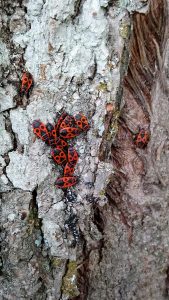
- Bright red/black firebugs congregated on tree trunk (Phyrrhocoris apterus).
- Windswept coastline at Cape Kolka, where the Baltic Sea ends and the Bay of Riga begins. This area is a bottleneck for spring bird migration, when tens of thousands of birds fill the sky.
- White-tailed Eagles soaring at Cape Kolka.
- Starry nights – the Milky Way.
- Bog lichen that reminded me of Shrek’s ears (Cladonia?).
- Vocal cranes high above us (30–40 in number).
- Foraging humans – cranberries all about us.
- Deer ked flies – failed human attempts to minimise ked encounters.
- Towers – a fantastic way to view the raised bogs (up to 16km across).
- Livonian fishing culture and musical/poetic traditions. The Liv flag is green, white and blue, representing the forest, sand and sea that make up their coastal territory.
- Signs of wildlife: elk bed (large area of flattened grass); black grouse sandbath; trees snapped by elk to make them grow bushy; deer and wild boar paths and tracks.
- Beaver dams and surrounding areas (amazing feat of engineering seen close up).
- Giant bug hotel (bugs and kids and grown-ups love this!).
- Slippery board walk (and I mean slippery as ice).
- The sponginess of bogs (guide’s physical illustration, jumping up and down on it like a giant sponge soaked in water); being told about Ospreys lifting clumps of wet bog moss to cool chicks in the nest during summer heatwaves.
I do feel a bit swamped when selecting some interesting facts and hope this hasn’t got too bogged down in the detail (sorry, but I had to do it!) – it was, without doubt, a trip of a lifetime and a memorable experience for which I am truly grateful to the CNPA for putting me forward and to the SNPS for accepting my application to join them on this 40th Anniversary trip.
Heather Palomino september 2019

